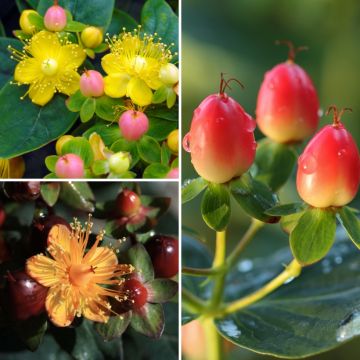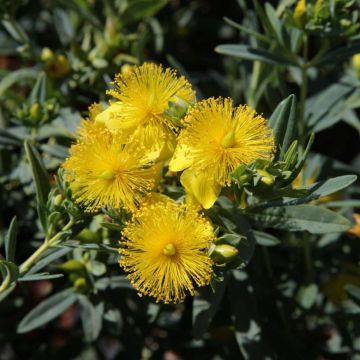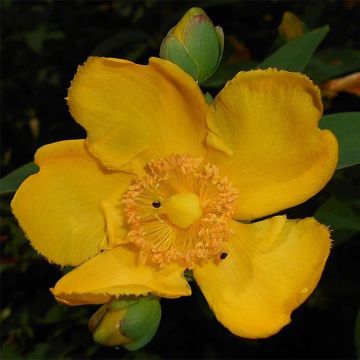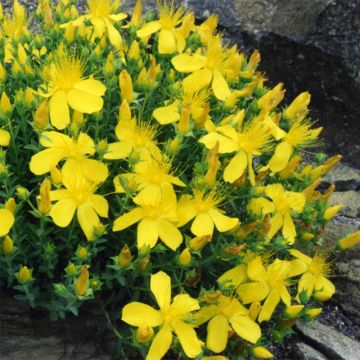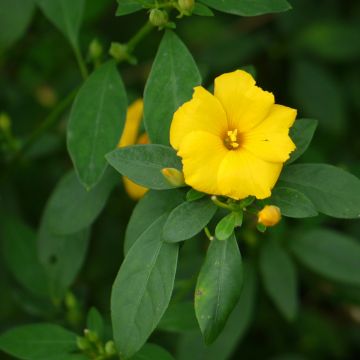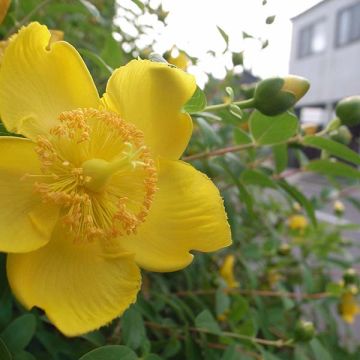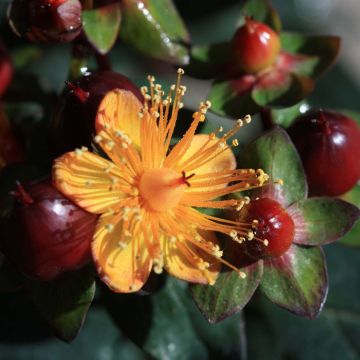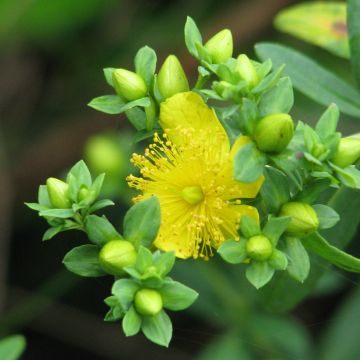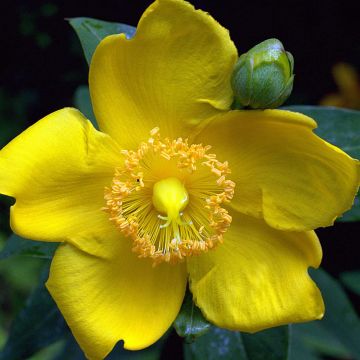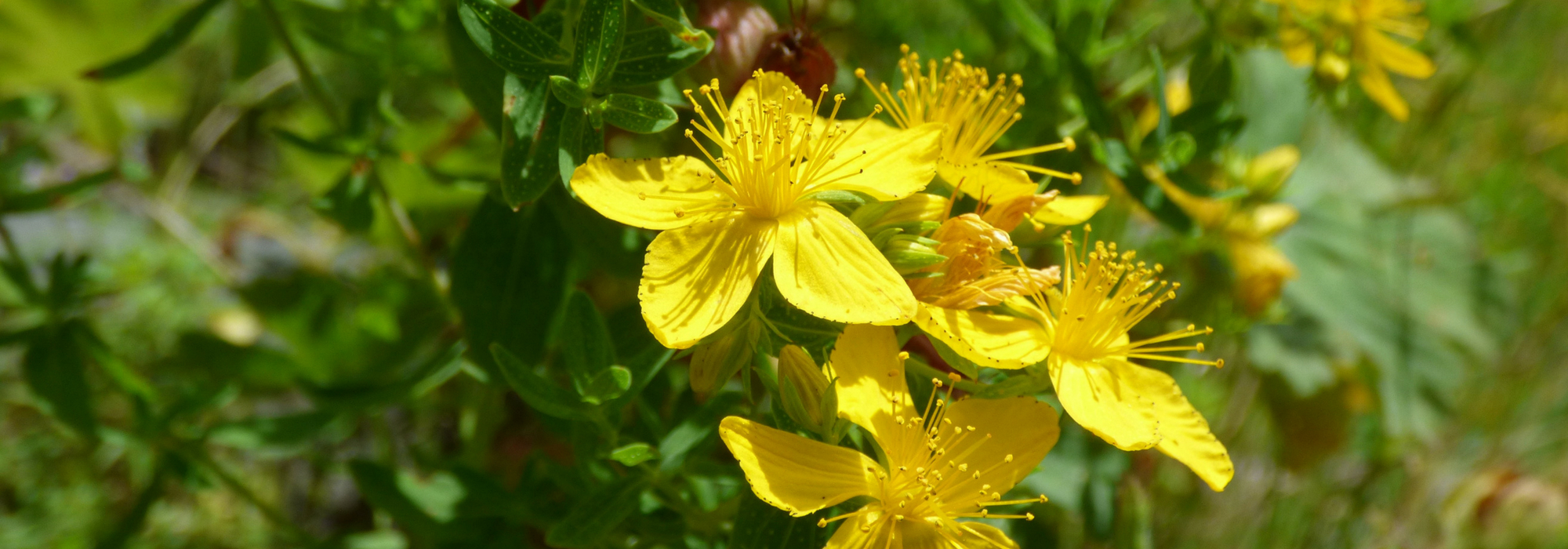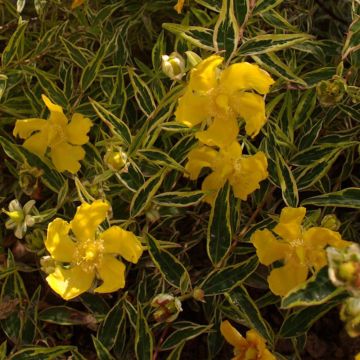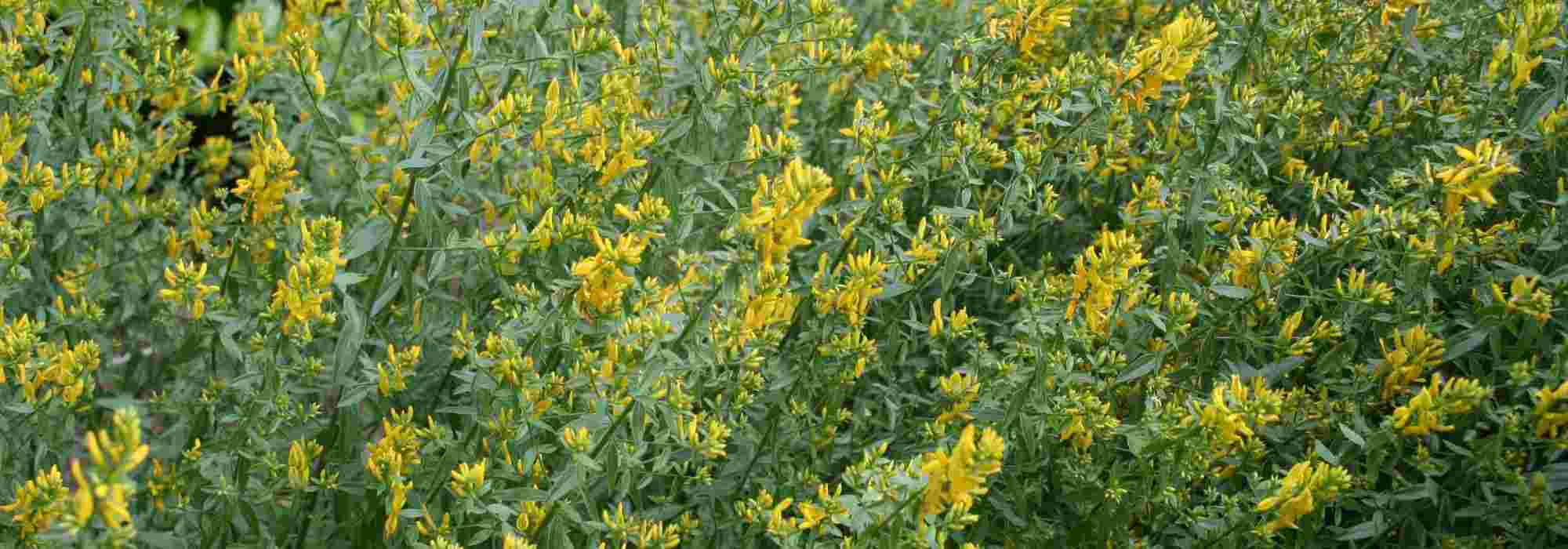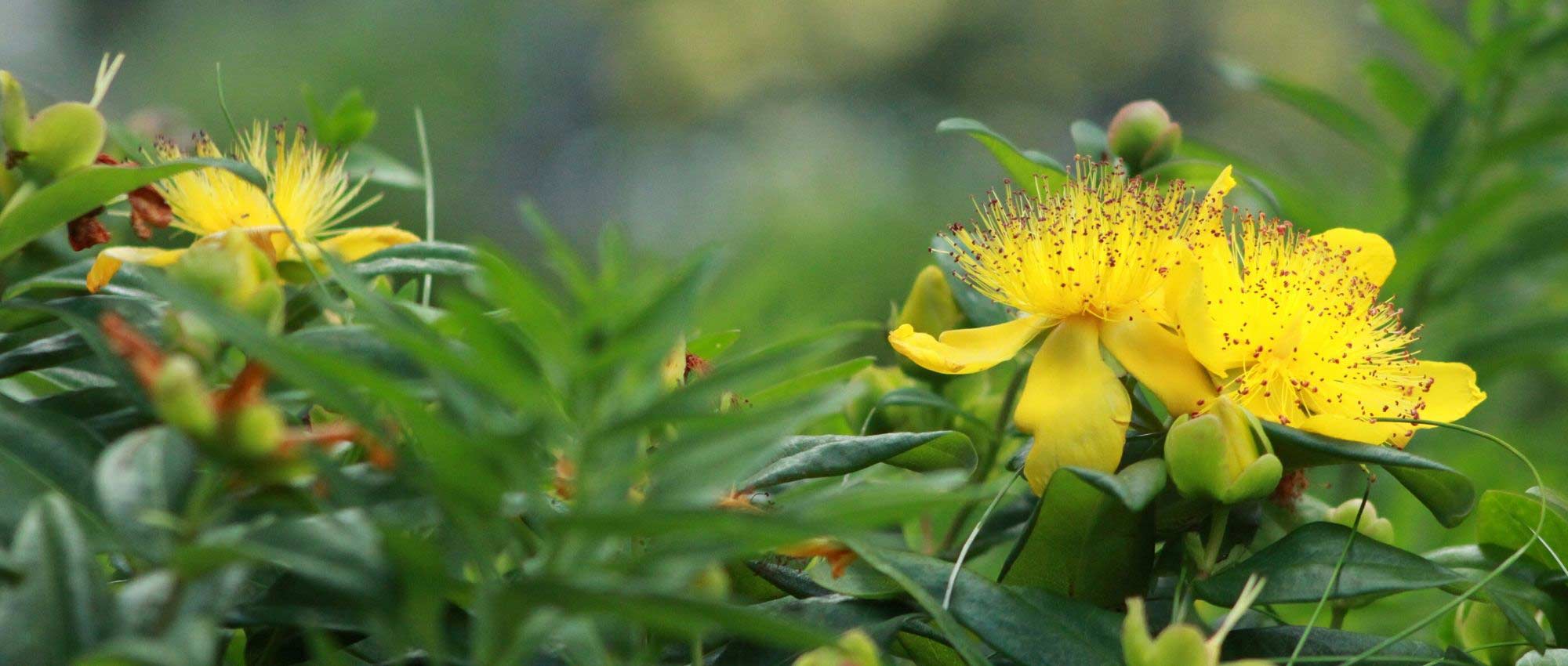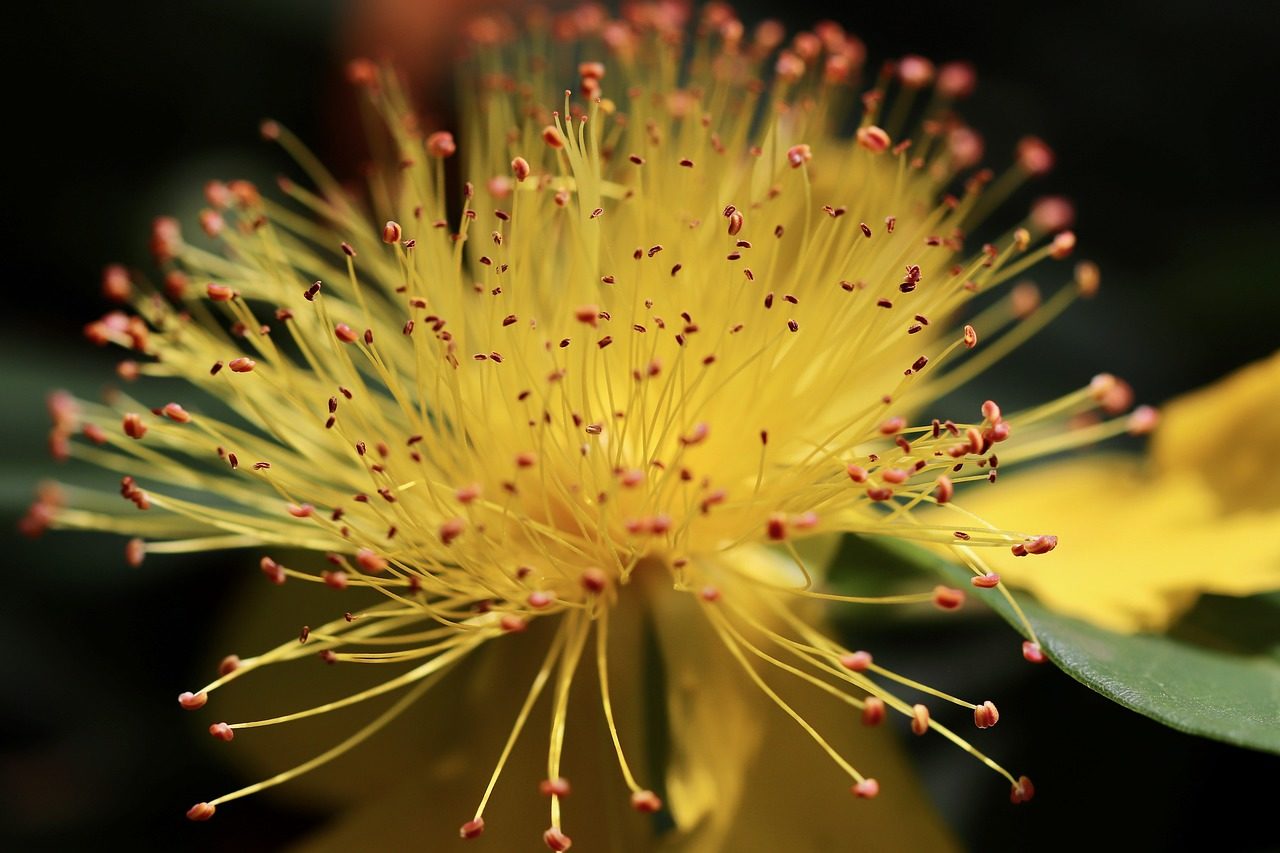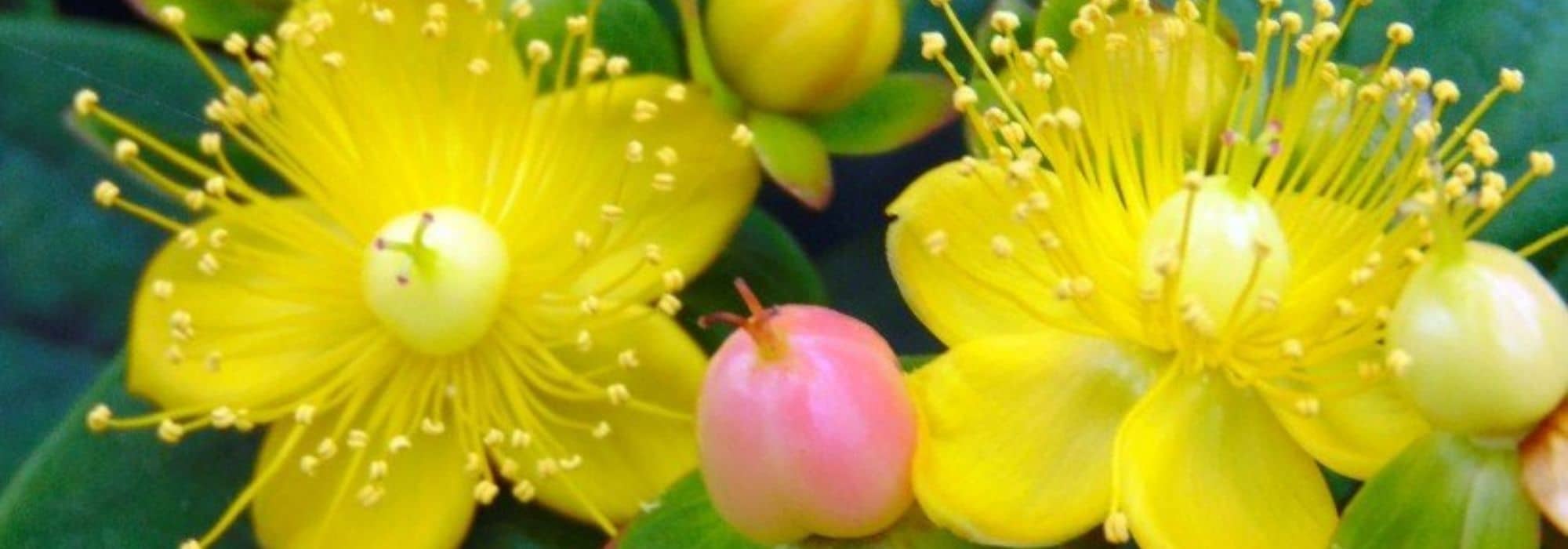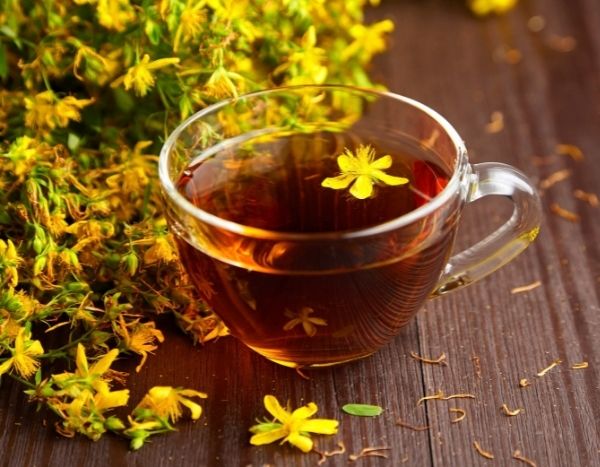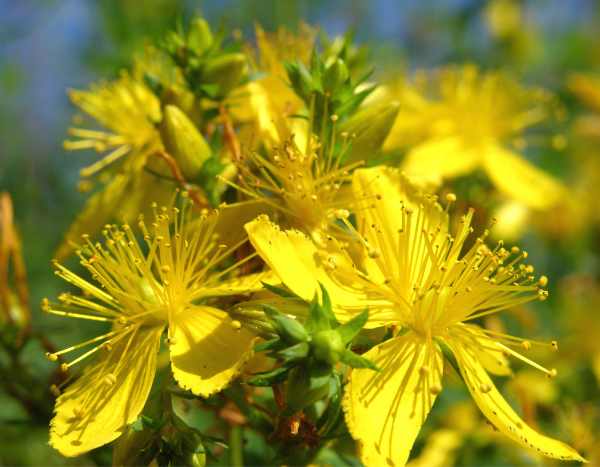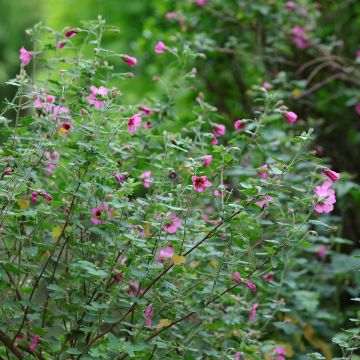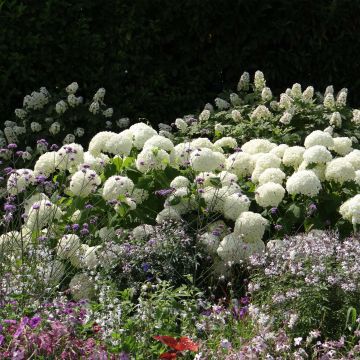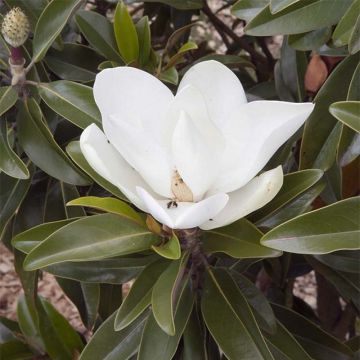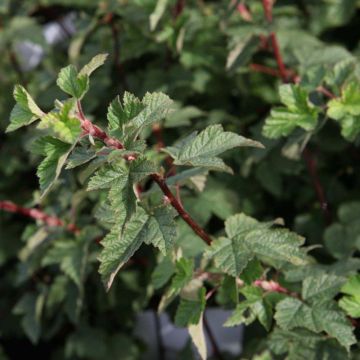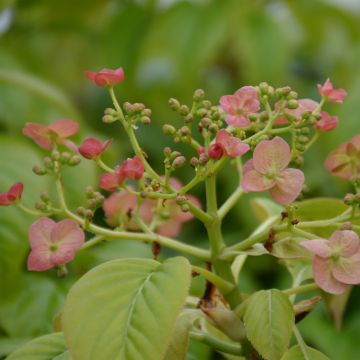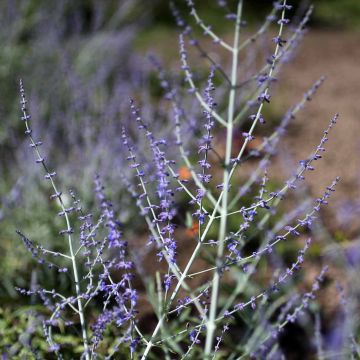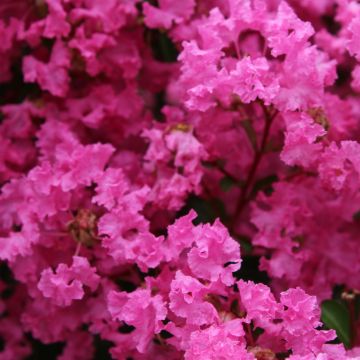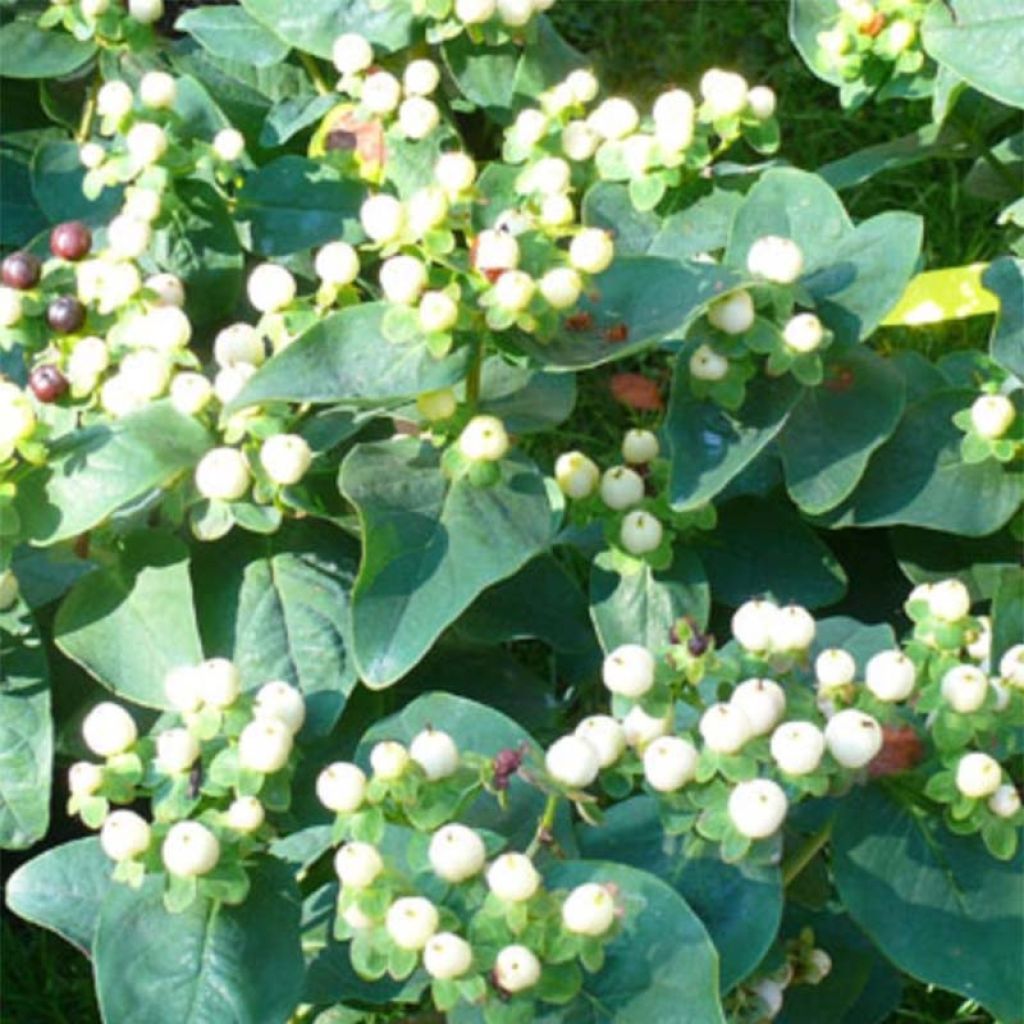

Hypericum inodorum Magical White Kolmawhi - St. John's wort
Hypericum inodorum Magical White Kolmawhi - St. John's wort
Hypericum x inodorum Magical White® 'Kolmawhi'
St. John's wort
Special offer!
Receive a €20 voucher for any order over €90 (excluding delivery costs, credit notes, and plastic-free options)!
1- Add your favorite plants to your cart.
2- Once you have reached €90, confirm your order (you can even choose the delivery date!).
3- As soon as your order is shipped, you will receive an email containing your voucher code, valid for 3 months (90 days).
Your voucher is unique and can only be used once, for any order with a minimum value of €20, excluding delivery costs.
Can be combined with other current offers, non-divisible and non-refundable.
Why not try an alternative variety in stock?
View all →This plant carries a 24 months recovery warranty
More information
We guarantee the quality of our plants for a full growing cycle, and will replace at our expense any plant that fails to recover under normal climatic and planting conditions.
Would this plant suit my garden?
Set up your Plantfit profile →
Description
Hypericum x inodorum Magical White ('Kolmawhi'), like all bushy St. John's worts in the Magical Series, has a naturally compact habit, and its beautiful semi-evergreen foliage resists rust well. It is covered with small golden yellow flowers throughout summer, followed by beautiful clusters of shiny white fruits, turning black when ripe. Flowers and fruits mix on the plant throughout summer on beautiful green-blue foliage, and the fruits, which often persist until early winter, contribute to making this shrub attractive for long months. An all-terrain plant par excellence, St. John's wort thrives in full sun or partial shade in flower beds, rockeries, borders, or even in a container on a patio.
'Kolmawhi' is part of a new generation of hybrids developed in Holland, resistant to the rust disease that affects many bushy hypericums in humid climates, especially those derived from the Hypericum inodorum species, native to the Island of Madeira. The Magical hypericums produce berries of various colours, ranging from white to green, yellow, pink and orange, to red and almost black. These compact little bushes flower abundantly from the first year in the garden, and bear fruit generously and regularly. All these plants belong to the Hypericaceae family.
Magical White grows rapidly. Generally, it does not exceed 90cm (35in) in height and 1.1m (4ft) in width. It has a bushy and dense habit, well-branched vegetation, and mostly semi-evergreen leaves. They are oval-shaped, leathery, without petioles, light green in spring, darkening in summer, and slightly glaucous underneath. It flowers throughout summer, from June-July to September. The flowers are produced abundantly in clusters of 3 to 23 tiny flowers, 1.5 to 3cm (1in) in diameter. They consist of 5 rounded, golden yellow petals arranged in an open cup. The centre of the flower is occupied by a crown of protruding, rather long stamens. The main attraction of this variety is its astonishing white fruiting. Gathered in clusters, the small conical shiny white berries turn black at the end of the season.
St. John's worts are appreciated for their very long flowering period and their ease of cultivation in all soils and under all climates, even by the sea and even in the shade. If you like yellow flowers, Magical White is an ideal choice for a new garden, even for novice gardeners. It excels in low shrub or perennial flower beds, but also planted in a large pot on a patio or balcony. For example, you can plant it with purple foliage plants (physocarpus, berberis, bronze fennel) in a fashionable design, or play on the perfect harmony between the yellow of its flowers and the blue of perovskia, caryopteris, nepeta, or perennial geranium. Surround your composed flower beds with eEuphorbias and alchemillas, with very flattering foliage. Its summer yellow flowering will not compete with the more pastel spring flowers. Its long-lasting flowers, as well as its branches laden with white pearls, can be used in original bouquets.
Hypericum inodorum Magical White Kolmawhi - St. John's wort in pictures
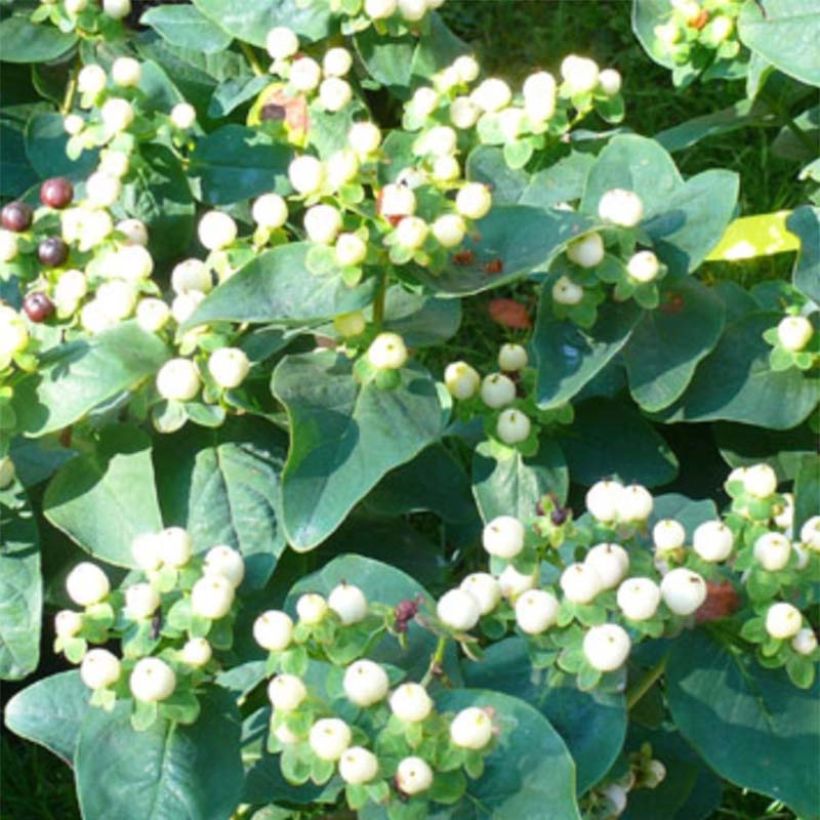

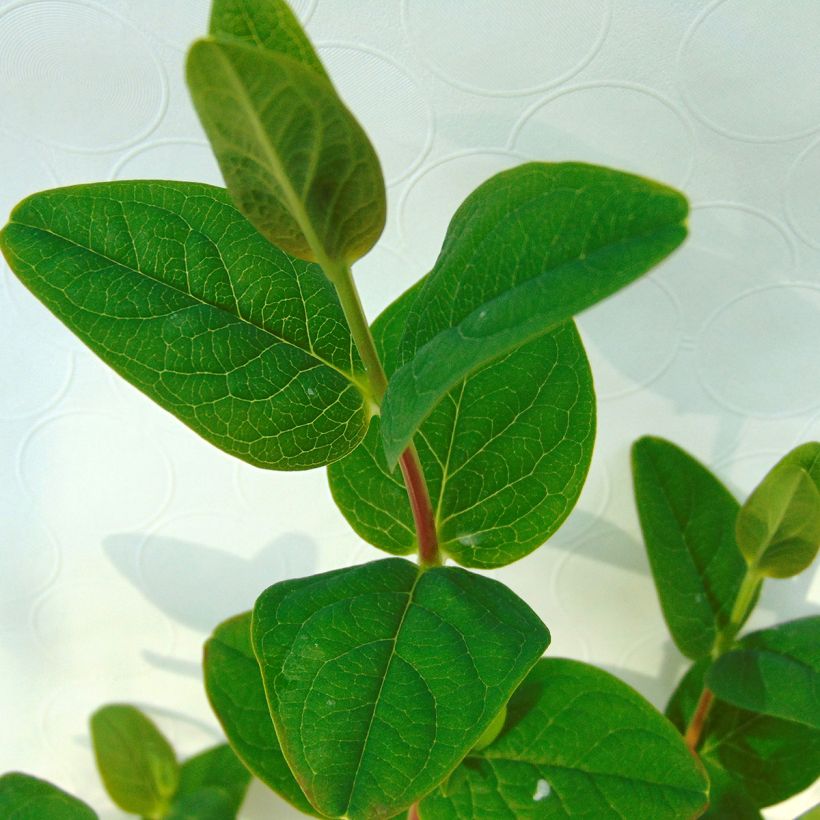

Plant habit
Flowering
Foliage
Botanical data
Hypericum
x inodorum
Magical White® 'Kolmawhi'
Clusiaceae
St. John's wort
Cultivar or hybrid
Other Hypericum - St.John's Wort
View all →Planting and care
In warm regions, plant in semi-shade or full shade. Its foliage can be damaged by scorching sun. In cool regions, plant in the sun. Shelter it from wind. It can adapt to most soils, as long as they are well prepared. Soil pH is not important, but it should not be excessively acidic or excessively alkaline. It needs light, well-drained soil, deep enough to allow it to better resist dry summers. It is quite hardy, resistant to diseases, and its enemies are rare.
Carry out a shaping pruning, after flowering, or at the start of spring.
Planting period
Intended location
Care
Planting & care advice
This item has not been reviewed yet - be the first to leave a review about it.
Similar products
Haven't found what you were looking for?
Hardiness is the lowest winter temperature a plant can endure without suffering serious damage or even dying. However, hardiness is affected by location (a sheltered area, such as a patio), protection (winter cover) and soil type (hardiness is improved by well-drained soil).

Photo Sharing Terms & Conditions
In order to encourage gardeners to interact and share their experiences, Promesse de fleurs offers various media enabling content to be uploaded onto its Site - in particular via the ‘Photo sharing’ module.
The User agrees to refrain from:
- Posting any content that is illegal, prejudicial, insulting, racist, inciteful to hatred, revisionist, contrary to public decency, that infringes on privacy or on the privacy rights of third parties, in particular the publicity rights of persons and goods, intellectual property rights, or the right to privacy.
- Submitting content on behalf of a third party;
- Impersonate the identity of a third party and/or publish any personal information about a third party;
In general, the User undertakes to refrain from any unethical behaviour.
All Content (in particular text, comments, files, images, photos, videos, creative works, etc.), which may be subject to property or intellectual property rights, image or other private rights, shall remain the property of the User, subject to the limited rights granted by the terms of the licence granted by Promesse de fleurs as stated below. Users are at liberty to publish or not to publish such Content on the Site, notably via the ‘Photo Sharing’ facility, and accept that this Content shall be made public and freely accessible, notably on the Internet.
Users further acknowledge, undertake to have ,and guarantee that they hold all necessary rights and permissions to publish such material on the Site, in particular with regard to the legislation in force pertaining to any privacy, property, intellectual property, image, or contractual rights, or rights of any other nature. By publishing such Content on the Site, Users acknowledge accepting full liability as publishers of the Content within the meaning of the law, and grant Promesse de fleurs, free of charge, an inclusive, worldwide licence for the said Content for the entire duration of its publication, including all reproduction, representation, up/downloading, displaying, performing, transmission, and storage rights.
Users also grant permission for their name to be linked to the Content and accept that this link may not always be made available.
By engaging in posting material, Users consent to their Content becoming automatically accessible on the Internet, in particular on other sites and/or blogs and/or web pages of the Promesse de fleurs site, including in particular social pages and the Promesse de fleurs catalogue.
Users may secure the removal of entrusted content free of charge by issuing a simple request via our contact form.
The flowering period indicated on our website applies to countries and regions located in USDA zone 8 (France, the United Kingdom, Ireland, the Netherlands, etc.)
It will vary according to where you live:
- In zones 9 to 10 (Italy, Spain, Greece, etc.), flowering will occur about 2 to 4 weeks earlier.
- In zones 6 to 7 (Germany, Poland, Slovenia, and lower mountainous regions), flowering will be delayed by 2 to 3 weeks.
- In zone 5 (Central Europe, Scandinavia), blooming will be delayed by 3 to 5 weeks.
In temperate climates, pruning of spring-flowering shrubs (forsythia, spireas, etc.) should be done just after flowering.
Pruning of summer-flowering shrubs (Indian Lilac, Perovskia, etc.) can be done in winter or spring.
In cold regions as well as with frost-sensitive plants, avoid pruning too early when severe frosts may still occur.
The planting period indicated on our website applies to countries and regions located in USDA zone 8 (France, United Kingdom, Ireland, Netherlands).
It will vary according to where you live:
- In Mediterranean zones (Marseille, Madrid, Milan, etc.), autumn and winter are the best planting periods.
- In continental zones (Strasbourg, Munich, Vienna, etc.), delay planting by 2 to 3 weeks in spring and bring it forward by 2 to 4 weeks in autumn.
- In mountainous regions (the Alps, Pyrenees, Carpathians, etc.), it is best to plant in late spring (May-June) or late summer (August-September).
The harvesting period indicated on our website applies to countries and regions in USDA zone 8 (France, England, Ireland, the Netherlands).
In colder areas (Scandinavia, Poland, Austria...) fruit and vegetable harvests are likely to be delayed by 3-4 weeks.
In warmer areas (Italy, Spain, Greece, etc.), harvesting will probably take place earlier, depending on weather conditions.
The sowing periods indicated on our website apply to countries and regions within USDA Zone 8 (France, UK, Ireland, Netherlands).
In colder areas (Scandinavia, Poland, Austria...), delay any outdoor sowing by 3-4 weeks, or sow under glass.
In warmer climes (Italy, Spain, Greece, etc.), bring outdoor sowing forward by a few weeks.






























